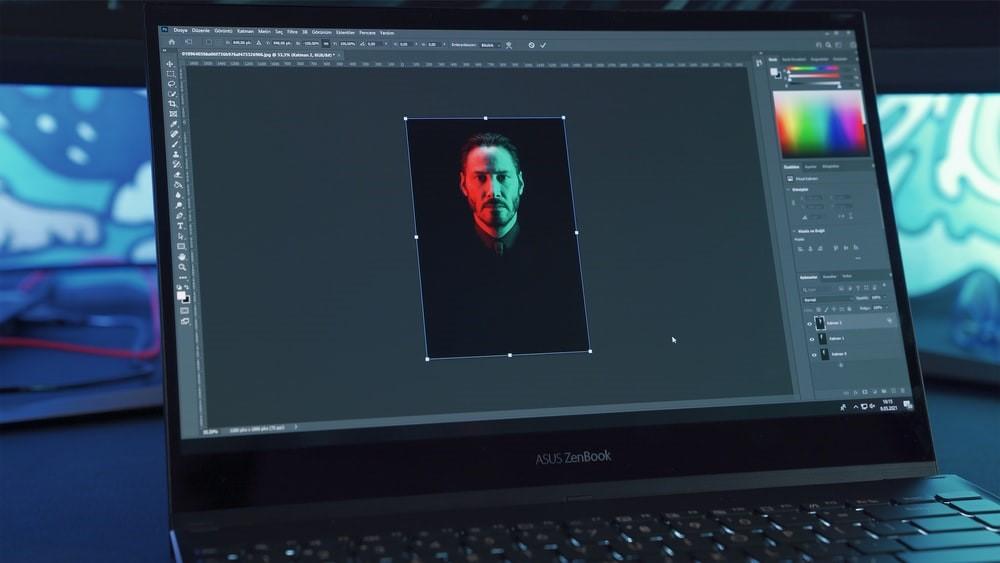
Graphic designers are artists who use creative techniques to create advertisements, logos, and print media.
It is a creative job that uses visual art, with graphic designers working on projects like posters, brochures, websites, and more.
A graphic design career requires creativity and attention to detail.
It can be done with many different materials such as pictures, paint, markers, pencils, or computer software programs.
Graphic designers are expected to have at least a bachelor’s degree in graphic design to start their careers.
Graphic designers play an essential role in the communication industry. They are responsible for creating visual graphics and layouts for advertisements, magazines, newspapers, and other media.
In general, graphic designers must think creatively and have strong design skills. They must also be able to understand the needs of their clients and produce work that meets them.
To achieve these tasks and goals, they usually have a lot of experience working with different software programs, such as Adobe Photoshop and InDesign.
Moreover, you can find graphic designers in many organizations, including television, magazines, music, advertisements, web design, and film-making companies.
Several visual elements are incorporated into their designs, such as typography, color theory, and image editing.
Of course, since it covers a wide range of fields, a graphic design salary varies significantly depending on the field and location.

Where Is Graphic Designing Used?
Graphic design is everywhere these days.
Indeed, every company demands graphic design for its products or websites to increase its market value. It helps a website stand out from the crowd and makes it user-friendly.
To achieve this, graphic designers use various materials and techniques to create and combine typefaces, images, and symbols into a composition that helps communicate a message or tell a story.
The fruits of their labor can be found in advertisements, online publications, magazines, movie posters, and more.
Graphic designers also need to foster brand identities by creating logos for businesses to market their products or services.
Their logos are subsequently plastered onto everything, from the product packaging to the sign outside the businesses’ headquarters.
Graphic designers are also increasingly being called on to create digital content such as websites, social media graphics, and email newsletters.
Top 9 Essential Skills Graphic Designers Need

Let’s take a look at the ten must-have skills for a graphic designer!
1. Typography
Typography is the technique and process of arranging alphabets to make written language accurate, legible, and appealing.
Graphic designers use this tool to create visual communication, such as logos, posters, and menus. Typography skills are especially crucial for designing visually appealing work.
Therefore, graphic designers must choose the suitable typeface, font size, and font color to create well-balanced and harmonious designs.
They also need to understand how different fonts can be combined to create a unique look.
2. Design Principles
Design principles are skills that a graphic designer must possess.
Specifically, they must understand color theory, contrast, image creation and application, art history, composition/layout, user interface design (UI), user experience (UX), page layout, form design, and iconography.
These principles help control how an image, text, or other visual elements will look when posted on different platforms.
While some skills can be applied to all platforms, design principles only work when implemented within particular contexts by people who understand them well.
3. Digital Design
Digital designing includes photoshop skills for image editing, InDesign skills for laying out pages properly, and illustrator skills for creating logos and other images.
It also includes knowing how to use the latest Adobe Creative Cloud products.
Moreover, with the help of computers, designers can even utilize pixel techniques to create digital works emulating traditional design mediums.
Pixel designs are based on tiny dots arranged into patterns to create images and textures used in all forms of media, including web pages and animation production.
4. Print Design
You might be surprised to learn that print design skills are still an integral part of the graphic design world.
There is simply no substitute for good old-fashioned craftsmanship for designers who work digitally and analog.
This will come as no surprise to anyone who has tried designing anything by hand. But, unfortunately, digital designers often fail to recognize this fact.
There is something pure about putting pencil to paper and creating a piece of art using nothing more than your basic artistic skills unassisted.
It can truly inspire you in ways that computer programs simply cannot.
5. Software Handling
Nevertheless, if you’re interested in graphic design, it’s crucial to have the right software skills. Different software programs handle graphics in different ways, so it’s important to be familiar with most of them.
Some software programs are specifically designed for graphic designers’ needs. These include Adobe Photoshop and Illustrator, both used by professional graphic designers.
Other software programs, such as Microsoft Word or Excel, also have basic graphics handling capabilities.
Hence, one needs to be proficient in at least one software program to create the best possible designs.
6. Branding
Branding skills are typically used to design logos and other branding elements. So naturally, graphic designers need to understand what makes their clients’ brands unique clearly.
Keeping this in mind, they should be able to create a unified look for all designs, ensuring they accurately reflect the image of your company or product.
This involves developing a style guide that outlines the brand’s colors, fonts, and logo usage.
Indeed, the style guide should be applied to all marketing materials, from website design to packaging, to create a unified look.
7. Creativity
Graphic designers need to think outside the box and develop new and innovative ideas to create truly stunning visuals.
This can require a great deal of skill and creativity, which is why it’s so important for designers to tap into their inner artists whenever they need to come up with fresh ideas.
If you can do so successfully, your designs will stand apart from the rest and make them truly unique. Nevertheless, creativity is not something that comes naturally to everyone – it takes skills and practice to channel it constructively.
8. Problem-Solving
Graphic designing is a process that often involves solving problems. Therefore, to create a compelling and visually appealing illustration, it is necessary to identify and solve any potential challenges.
Some common graphic design problems include:
- Font selection
- Image selection
- Color choice
- Layout structure
- Spacing issues
The key to a successful graphic design is finding the best solution to the problem at hand. Of course, this requires some experimentation, but it’s essential to be innovative and flexible.
9. Portfolio Management
Your portfolio is one of the most critical things in this field. It showcases your work, demonstrating your abilities as a graphic designer.
The portfolio should be tailored to the specific job or clients you’re targeting.
Hence, you should research the company to figure out what they’re looking for and then adjust your portfolio to highlight those exact skills and experiences.
You also have to keep the portfolio up-to-date, adding new projects regularly.

Top Graphic Design Schools
Due to its great potential, many people consider a graphic designing career. However, everything boils down to mastering this skill.
Graphic design is taught in various schools, colleges, universities, and other educational institutions. So let’s quickly list the top graphic design schools in the United States for you to choose from!
- Rhode Island School of Design
- North Carolina State University
- Pennsylvania College of Art & Design
- Ringling College of Art & Design
- Cleveland Institute of Arts
- Kansas City Art Institute
Career Options For Graphic Designers

One of the first questions asked now and then is, “Is graphic design a good career?” Well, there are various career options to consider in graphic designing.
Let’s take a look at some of them!
Multimedia Artist
Multimedia artists use a variety of software programs to create digital art, illustrations, and 3D models. They are responsible for developing the graphic elements of multimedia projects.
This includes creating illustrations, designing layouts, and adding animation and special effects.
To this end, multimedia artists typically have a degree in graphic design or a related field. They also have strong graphic design skills, including proficiency in graphic software programs.
Marketing Specialist
A marketing specialist has many tasks and responsibilities, including developing marketing plans and strategies.
Furthermore, they are also expected to manage client relationships, which needs good interpersonal skills.
On the upside, as a marketing specialist, you would also have the opportunity to work with all kinds of clients and businesses, some of whom are very exciting.
Marketing specialists typically have strong communication and organizational skills as well. Furthermore, they must think creatively and adapt their designs to meet clients’ needs.
Product Developer
A product developer is responsible for developing new products or improving existing ones.
This includes coming up with ideas, creating prototypes, and testing them to check if they meet customer needs. On top of this, they have to develop a marketing strategy to promote the products, too.
Product developers typically have strong design skills and knowledge of manufacturing processes. As such, they are also involved in the packaging and labeling of products.
Salary Of A Graphic Designer
The median salary of graphic designers varies, depending on region, field, and expertise.
For instance, graphic designers working in advertising and public relations earn more than those who work for newspapers or editors.
The average entry-level graphic design salary is $35,000 per year, whereas the average salary for experienced graphic designers is $50,000 per year.
Moreover, graphic design jobs are set to rise by 4% between 2022 and 2028, according to the Bureau of Labor Statistics (BLS).
Gain The Skills Needed To Become A Successful Graphic Designer
Graphic design is a skill that most people can learn. All one needs is passion and patience. Then, with enough practice, you can also become a graphic designer.
If you want to become a great graphic designer, there is no better option than Superprof. They have the best tutors out there, helping students learn and master graphic designing skills!















